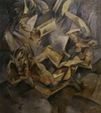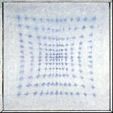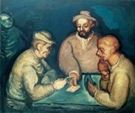Modern and contemporary art
The origins of the Moravian Gallery collections go back to the Francis Museum (now the Moravian Provincial Museum) in Brno, established in 1818. However, systematic acquisition only started under Dr. Jaroslav Helfert, the first director of the museum (from 1923) and curator of its picture gallery. His methodical approach enabled a more consistent structure to be brought to the collections and their expansion with topical works representing Czech modernism. The first acquisitions included, for example, the sculpture Before the Bath (1906) by Jan Štursa. The picture gallery permanent exhibition was installed in the Dietrichstein Palace in the late 1920's.
Helfert's successor in the gallery management was Dr. Albert
Kutal, who (apart from building a collection of Moravian
Gothic art) compiled a series of modern Czech art at the end
of the 1920's and the beginning of the 1930's. Among major
acquisitions in these years were Procházka's Players (1909) and
Prometheus (1911), as well as further works of Czech modernism by
Emil Filla, Josef Šíma and Jaroslav Král.
In 1948 Albert Kutal was succeeded by Dr. Karel Krejčí, followed
by Dr. Jiří Hlušička, Dr. Vlasta Kratinová, Dr. Marie Dohnalová,
Dr. Kateřina Svobodová and Dr. Jitka Sedlářová. The period after
1945 was associated with unprecedented expansion of the
collections; for example, in 1945 the gallery received donations of
Kubišta's Still Life with a Lamp (1909), and in 1948 Haymaking
(1939) by Jaroslav Král. The complicated administrative situation
of the picture gallery, part of the Moravian Provincial Museum,
improved under Director Jiří Hlušička in 1961 when the Moravian
Gallery in Brno came into existence, through the separation of the
picture gallery of the museum and its merging with the Museum of
Applied Arts.
The gallery activities centre upon the documentation of the main
features of the development of 20th- and 21st-century art.
A remarkable series of sculptures and a collection of
drawings and graphic art gradually developed alongside the painting
collection. The first permanent exhibition of Czech 20th-century
art was created in 1970 (in the Moravian Provincial Museum
building) by Jiří Hlušička; the collection had later to be stored
in a depository.
The collection of modern and contemporary art boasts masterpieces
by the luminaries of Czech modern art: Jan Štursa, Jan Preisler,
Josef Mařatka and František Bílek, leading protagonist of Czech
symbolism. It contains a series of major works by the members
of the Osma [Eight] group and the Group of Visual Artists
(paintings by Filla, Kubišta, Kubín, Špála, Čapek, early pieces by
Antonín Procházka and Jan Zrzavý and cubist sculptures by Otto
Gutfreund such as Anxiety, 1911). A large collection of works
by Antonín Procházka enables viewers to observe changes in his
artistic approaches, largely associated with Brno culture. The
Czech interwar avant-garde is represented by works of Czech
poetism, by the artificialism of Jindřich Štyrský and Toyen (Dawn,
1931) and reflections of surrealism (sculpture Girl with Child by
Vincenc Makovský, Josef Šíma's painting Europe, works by František
Muzika, František Foltýn and others). The 1940's are represented by
echoes of the war (Emil Filla, Jan Bauch), works by members of
Skupina 42 [Group 42] (František Gross, Bohumír Matal, Jan Smetana
and others) and the Ra Group (Bohdan Lacina, Václav Zykmund). The
Czech informel is illustrated with works of Mikuláš Medek, Robert
Piesen, Josef Istler and others, while art trends in the second
half of the 20th century are represented by selected works by
Adriena Šimotová, Jiří John, Václav Boštík, Jiří Kolář, Michael
Rittstein, Brno artists Dalibor Chatrný, Miroslav Štolfa and
others.
A new permanent exhibition of modern and contemporary Czech art
was opened in 1994 in the reconstructed Pražák Palace.
A section mapping the late 19th century and the first half of
the 20th century was opened, in revised form, in 2001. A year
later it was supplemented with a further section spanning the
mid-20th century and the present.









